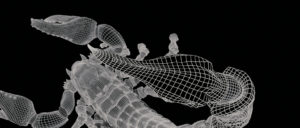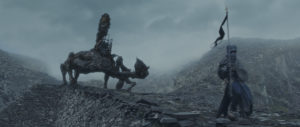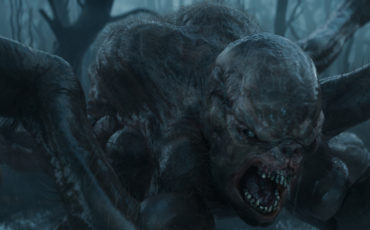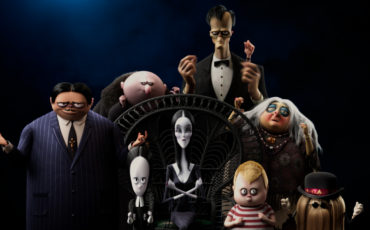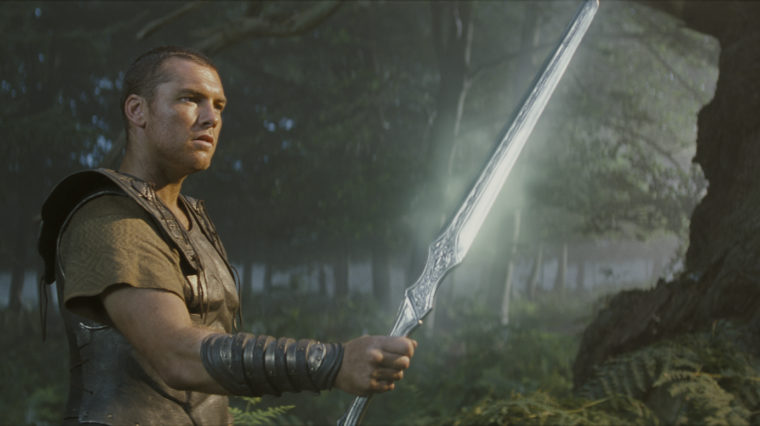
Image Animation: « There is No Limit to Special Effects »
Simon Stanley-Clamp on creating fearsome beasts for the re-make of Clash of The Titans.
It was December 2008 when visual effects house Cinesite got the call to say they’d been chosen to work on Louis Leterrier’s new film, a remake of the 1981 classic Clash of the Titans. As the excitement at the facility set in, visual effects supervisor Simon Stanley-Clamp set to work gearing his team up for what was to become the company’s most creative work to date.
Clash of the Titans follows the story of Perseus, played by Avatar actor Sam Worthington, who is born of a god but raised as a man. Perseus is helpless to save his family from Hades (Ralph Fiennes), the vengeful god of the Underworld. With nothing to lose, Perseus volunteers to lead a dangerous mission to defeat Hades before he can seize power from Zeus (Liam Neeson), the leader of the gods of Mount Olympus, and unleash hell on earth. Leading a daring band of warriors, Perseus sets off on a perilous journey deep into forbidden worlds where he finds himself battling unholy demos and fearsome beasts.
The film was shot at Longcross and Shepperton Studios in the UK and on location in Tenerife and Wales. With a team that scaled up to 80 people at the height of the project, Cinesite worked on 176 shots in the final cut after originally being awarded just 92. For their main sequence, the scorpioch battle scene, a battle involving a giant scorpion-like creatures called scorpiochs, Simon Stanley-Clamp spent four weeks on location in Tenerife ensuring that the footage being shot would align with the pre-visualisation sequences the facility had already created and delivered to Leterrier, many of which he decided to incorporate into the film.
With the concept decided, modelling and animating the six scorpiochs began. Using Autodesk Mudbox the scorpiochs were modelled with each pair and individual scorpiochs given their own look so they could be distinguished from each other in the battle. « Louis wanted us to ensure that the mother stood out, » says Stanley-Clamp. « We made a conscious decision to make her darker than the others and with red eyes to imply that evil has landed for Perseus and his band of warriors when they see her coming over the hill behind the other five. »
Cinesite painted high resolution textures on the scorpiochs using Photoshop giving them an ancient and mythical look. « We’ve been asked if this was done deliberately to stay true to Ray Harryhausen’s original vision, and while Louis wanted to do the original justice, we feel that we’ve taken the scorpiochs beyond the originals through the detailing, colouring and animation that we’ve created, » adds Stanley-Clamp.
The scorpiochs were animated using Autodesk Maya and it took a total of eight months to complete the battle sequence, which evolved from being three separate battles to one six-minute long fight sequence. The team faced the challenge of ensuring that the scorpiochs were weighted enough to look realistic as they walked. « Because they’re so much bigger than real scorpions, we had to calculate the speed these beasts would move at. It was a challenge at first because they needed to be quick enough to attack the warriors, but at the same time the viewer wouldn’t expect a 60-foot scorpioch to be as agile and speedy as a 15-foot fighter, so we had to play around with weighting them to reflect their different sizes, » explains Stanley-Clamp.
Another big challenge Cinesite faced was generating CG dust, sand and gravel particles. « What might sound like a simple task on the surface, proved to be very tricky in reality, » says Stanley-Clamp. « The scorpiochs throwing the warriors around the desert would naturally cause dust to be thrown up, but on the shoot and because the characters are CG, very little was generated. »
Cinesite’s solution was to develop a customised particle simulation solution for their pipeline. « We wrote a completely new fluid dynamics simulation pipeline centred on Houdini and rendered through Mantra. This pipeline was designed to create fluid dust simulations, gravel hits for where the scorpiochs’ feet hit the ground, and overall sand and light gravel in the atmosphere. The fluid dynamics simulation was fully self shadowing and allowed full interaction with the scorpiochs’ geometry, » explains Stanley-Clamp.
Without developing this proprietary software, Cinesite wouldn’t have been able to create the amount of dust, sand and gravel needed to make the interaction between the live action figures and the CG scorpiochs look realistic. « It really did save the day, » adds Stanley-Clamp. « It’s been a great addition to our pipeline and we’re already putting it to use on other projects. »
Cinesite delivered the film on time at the end of February 2010. Reflecting on the project and the inevitable comparison to the original, Stanley-Clamp concludes, « I think we’ve produced something which pays homage to the original, but at the same time shows that there’s no limit to visual effects thanks to a skilled team and amazing technology. »

